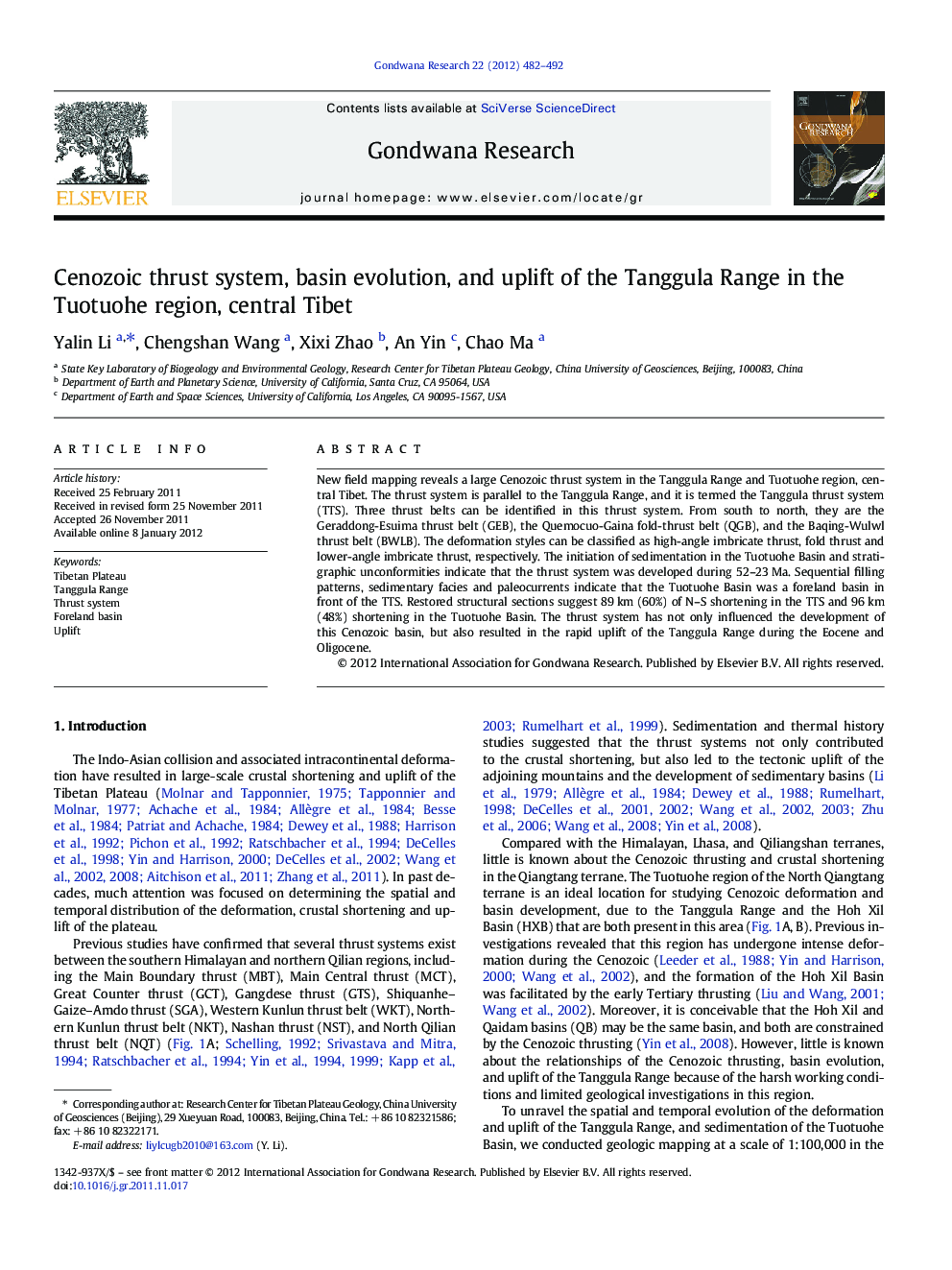| Article ID | Journal | Published Year | Pages | File Type |
|---|---|---|---|---|
| 4727153 | Gondwana Research | 2012 | 11 Pages |
New field mapping reveals a large Cenozoic thrust system in the Tanggula Range and Tuotuohe region, central Tibet. The thrust system is parallel to the Tanggula Range, and it is termed the Tanggula thrust system (TTS). Three thrust belts can be identified in this thrust system. From south to north, they are the Geraddong-Esuima thrust belt (GEB), the Quemocuo-Gaina fold-thrust belt (QGB), and the Baqing-Wulwl thrust belt (BWLB). The deformation styles can be classified as high-angle imbricate thrust, fold thrust and lower-angle imbricate thrust, respectively. The initiation of sedimentation in the Tuotuohe Basin and stratigraphic unconformities indicate that the thrust system was developed during 52–23 Ma. Sequential filling patterns, sedimentary facies and paleocurrents indicate that the Tuotuohe Basin was a foreland basin in front of the TTS. Restored structural sections suggest 89 km (60%) of N–S shortening in the TTS and 96 km (48%) shortening in the Tuotuohe Basin. The thrust system has not only influenced the development of this Cenozoic basin, but also resulted in the rapid uplift of the Tanggula Range during the Eocene and Oligocene.
Graphical abstractFigure optionsDownload full-size imageDownload as PowerPoint slideHighlights► The Tanggula thrust system led to 60% crustal shortening of the Tuotuohe region. ► The Tuotuohe basin is under the control of the Tanggula thrust system. ► The Tanggula thrust system resulted in the uplifting of the Tanggula Range.
